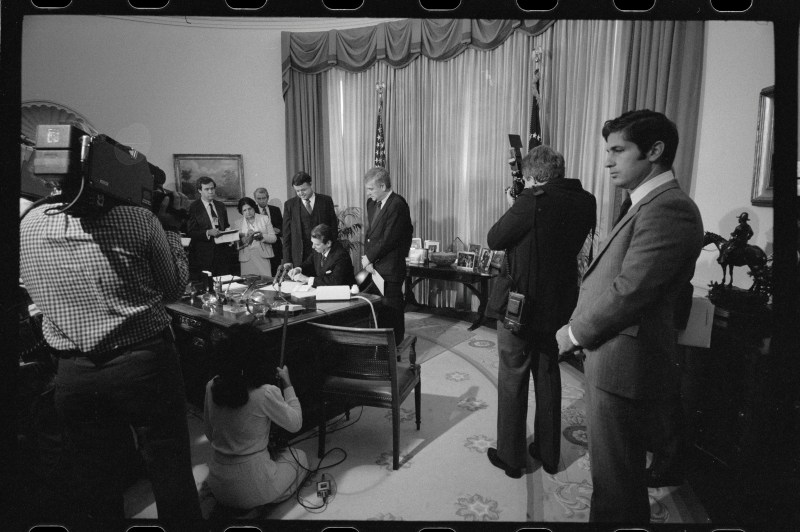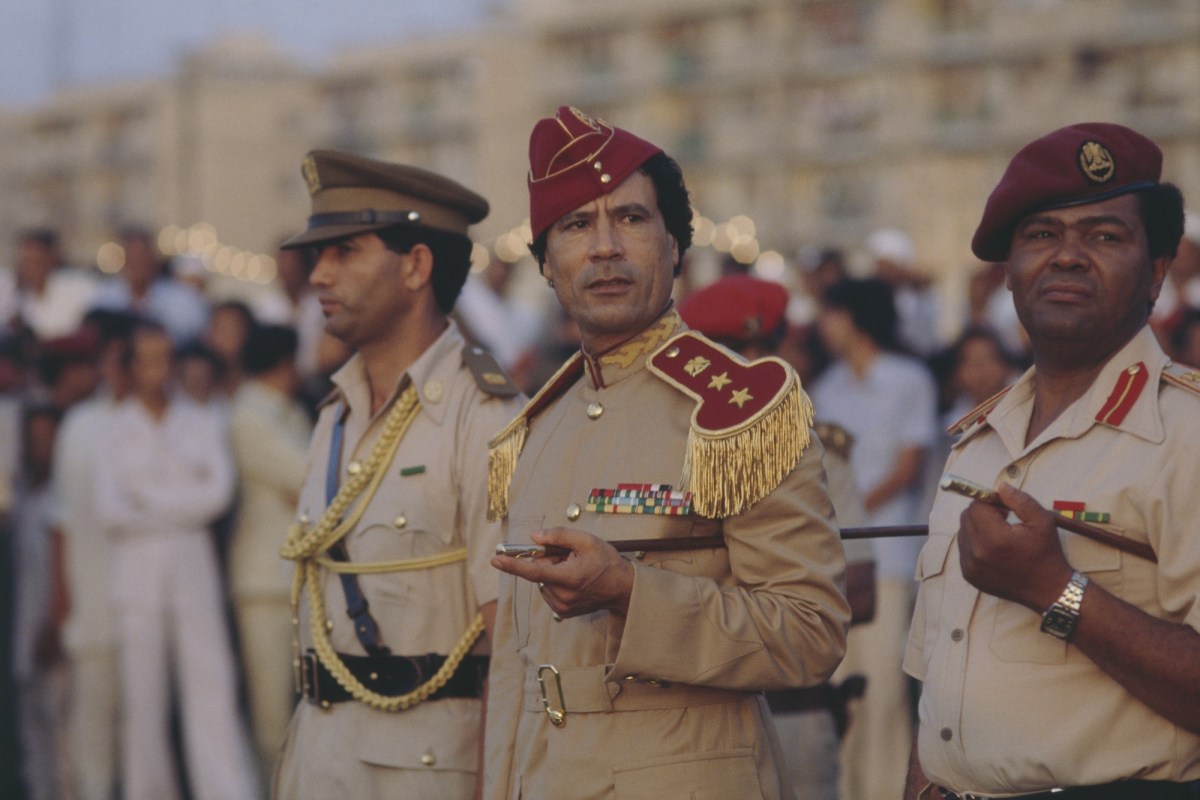First Mohammad Ramadan was shot and killed in April.
Then Abd al-Jalal Aref was gunned down in Rome eight days later.
Salam Mohamed Rtemi also met the same fate in Rome — two days after Aref.
Umran al-Mahdawi, a former diplomat, was in Bonn, Germany when he was gunned down in early May.
A day later ex-Army officer Abdul Bakr Rahman was decapitated in London.
In all, there were at least 10 murders over just a three-month period in 1980 – all the work, the CIA suspected, of professional and semi-professional Libyan hit squads working for dictator Muammar Qaddafi.
“We have reason to doubt that Libya’s Qadhafi has ordered a halt to the ongoing series of assassinations of Libyan dissidents living abroad,” a now-declassified CIA memo, with the bland title “Libyan Assassination Teams: Some Patterns,” says, using an alternate spelling for the late Libyan strongman. “While Western Europe has been a major arena for these incidents, we believe that Libyans living in the U.S. will also be targeted, in part as proof that no one is safe from Qadhafi’s vengeance.”
At the time relations between the U.S. and Libya had reached a nadir. The year before the U.S. added Libya to its list of state sponsors of terrorism, and after reports of the assassination squads surfaced, then-President Ronald Reagan ordered the U.S. embassy in Tripoli closed. In 1986, Reagan would dub Qaddafi the “mad dog of the Middle East.”

But in 1980, other killers were off the leash, both professionals and amateurs, according to the Agency.
“Preliminary analysis of the European murders suggests that there are two types of Libyan hit teams operating against dissident targets,” the memo says. “In the majority of killings, it appears that professional assassins (presumably belonging to the Libyan Intelligence Service) have been the perpetrators. In several cases, however, the killings appear to have been the work of amateurs, possibly students or others with little formal training in covert warfare. The fact that two of the victims were killed by strangulation and decapitation suggests amateurs rather than professional killers.”
The CIA said the killers usually worked in two-man teams, with the support of local Libyans working at for the Libyan embassy – known as the Peoples’ Bureau. The locals would act as the “spotters” before the hit, assist with the logistics after the killers came in the country and then helped them escape again.
“In addition to whatever weapons the Peoples’ Bureau here already possesses, the Libyan government would not hesitate to use the diplomatic pouch to bring in more,” the memo says.
The CIA said that the fact that Libya had “Peoples’ Bureaus” abroad, rather than normal embassies, helped provide cover for the killers.
“The whole concept of the ‘Peoples’ Bureaus’ has caused an inordinate amount of difficulty for governments worldwide in trying to define the exact status of diplomats. At times the Libyans claim to have diplomatic immunity; at others… they have claimed to be in a non-diplomatic status and therefore not capable of being PNGed [diplomatically kicked out of the country]. Libyan assassins are probably capitalizing on this confusion and traveling on Peoples Bureau passports,” the memo says.
In 1981 the assassination campaign appeared to take a dramatic turn when the media reported that a Libyan hit squad had been sent to the U.S. to kill Reagan himself. But after weeks of sensational headlines, during which the White House took extra security precautions, nothing came of the threat, which was later speculated to be a hoax.
But for another American, the threat was very real. In October 1981, a “corporate recruiter” met with Libyan exile Faisal Zagallai. Six months before the FBI had reportedly warned Zagallai he was one of 24 students on a hit list because of his opposition to Qaddafi.
So Zagallai took a gun to meet the corporate recruiter, but it didn’t stop the other man from shooting him in the head twice. Somehow he survived.
“There is little doubt that the orders came from Tripoli,” The New York Times reported later. “Four days after the shooting, Jana, the official Libyan press agency, said that Libya’s World Revolutionary Committee had acted against Mr. Zagallai.”
The would-be killer, an American Special Forces soldier, claimed he had been carrying a message from the CIA to Zagallai and shot him in self-defense. The CIA denied a connection to the man, and the ex-Special Forces soldier was sentenced to two years in prison.
By the end of 1981 Qaddafi halted what another CIA file says was the “first phase” of the assassination plots. In all, 11 Libyan dissidents had been killed.
Then, in 1985, five more attacks targeted dissidents again, in Greece, West Germany, Cyprus, Italy and Austria. Qaddafi also tried twice to kill dissidents in Egypt, but both times his killers were intercepted by Egyptian security, the CIA said.
Libya would remain on the U.S. State Sponsor of Terrorism list until 2007 when, after a rapprochement with America, the country was removed. The U.S. State Department said then that Qaddafi was “out of the terrorism business.”
But Qaddafi would meet a violent end four years later as a result of a popular uprising during the Arab Spring — murdered by his own people.
His last words were said to be a plea of sorts: “What did I do to you?”
This article was featured in the InsideHook newsletter. Sign up now.
























